The primary reason I went to India was for Yoga Teacher Training. Even though I’ve already attended several YTT’s, they were all completed before the existence of a regulating body called the Yoga Alliance.
When Yoga Alliance first formed, I’d already been teaching for 7 years. I had the opportunity to be ‘grandfathered’ in at their highest credential (the E-RYT 500 registration) but I didn’t believe Yoga Alliance would play any significant role in the world of yoga. I couldn’t understand how a US-based institution felt they had the right to register people in a practice 1000s of years old from India, so I declined.
Fast forward, the US Yoga Alliance has indeed become a worldwide institution, even in India. The resorts, retreat centers, and ships that I work for rely on Yoga Alliance registration to validate the quality of yoga instructors they hire. Since I missed the window to be grandfathered in, I had to completely redo my yoga teacher training in order to claim that I’ve studied at a Yoga Alliance Registered school.
Why India?
There are many reasons to take a yoga teacher training in India. Most importantly because India is the homeland of yoga. I was attracted to the north, where the Ganges spills from the Himalayan foothills. Since ancient times, yogis have gathered in the town of Rishikesh seeking higher wisdom and realization.
Practically speaking, India is one of the cheapest countries to attend yoga teacher training. A 500-hour course in the States can cost upwards of $10,000 for the bare-bones training. In India, a 500-hour course runs $3000 – $4000, including lodging and meals.
My primary goal was getting that darn piece of paper with a yoga alliance stamp on it, so I wanted to keep the price low. I love to travel, so going to India to live in an ashram and immerse myself in yoga sounded great!
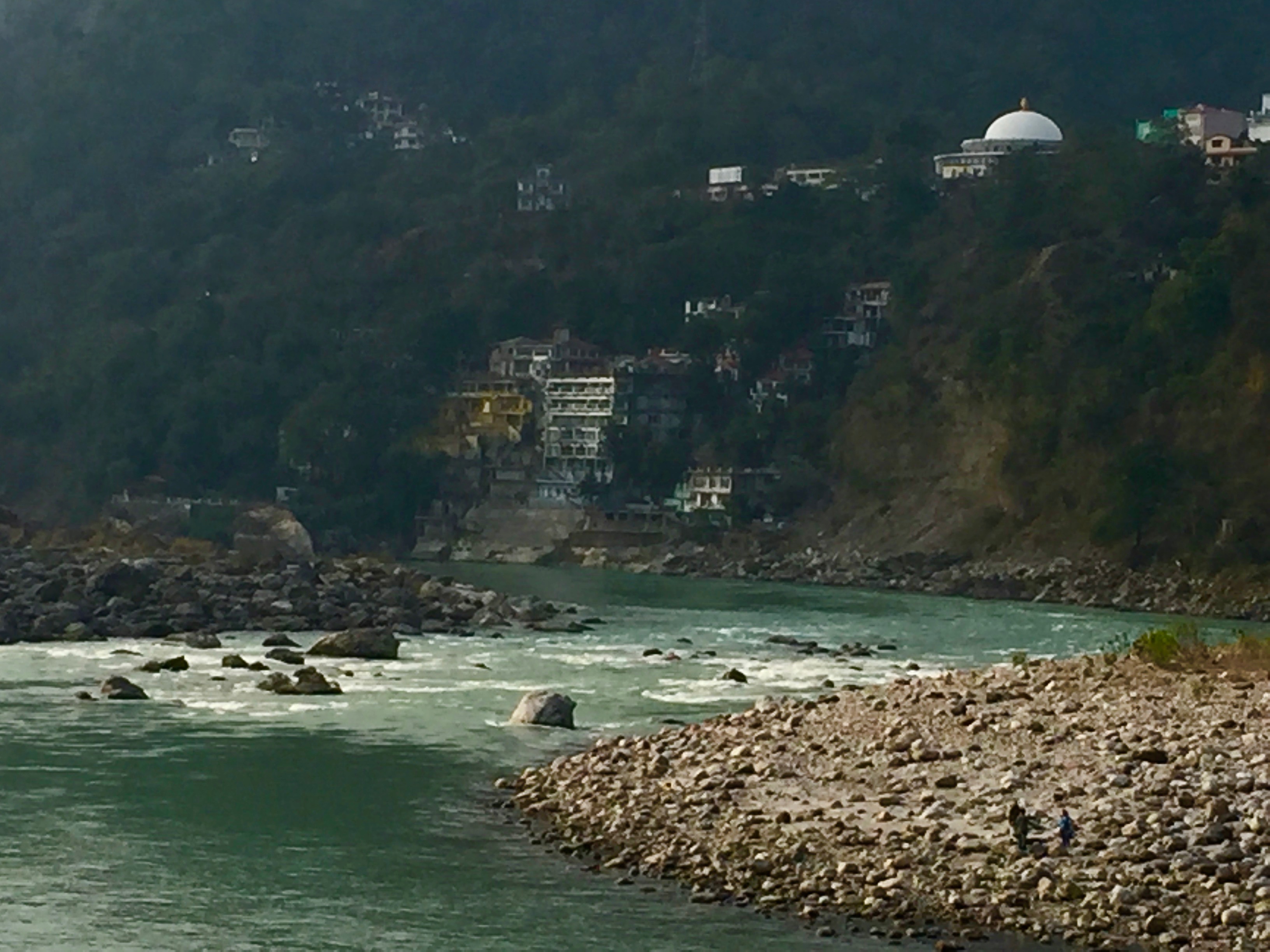
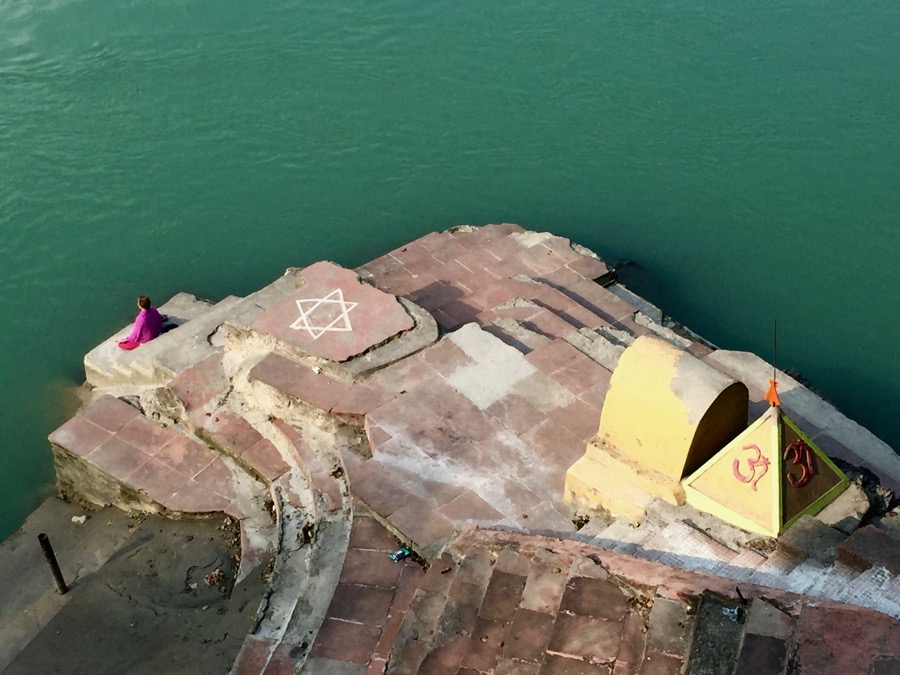
Truth be told, I suffered a lot. Everyone in my 500-hour course did. People attracted to yoga are generally positive and upbeat, but this training put our ‘positive thinking‘ abilities to the test. We had to work hard at it.
Much of the difficulty stemmed from facilities ill-equipped for North India’s two coldest months of December and January. This was compounded by completely losing trust in the schools administration. Much of what was promised or portrayed on their website was a flat-out lie. Some of the teachers were good, but overall I was highly disappointed.
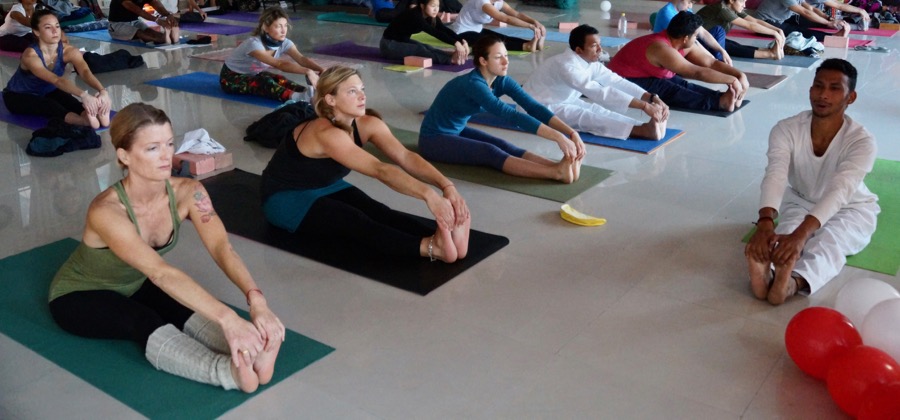
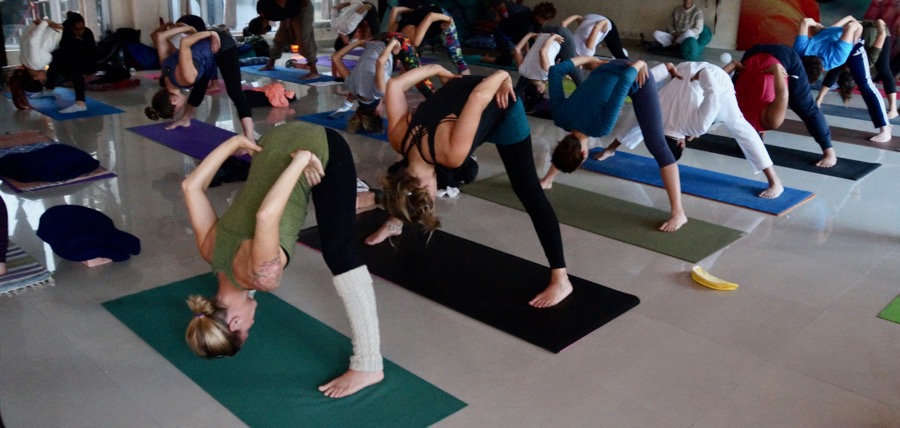
Do Your Research
Before coming to India, I was so busy getting rid of my belongings and preparing to live a nomadic lifestyle, that I had no time to properly research where I was going. Choosing my training didn’t get the attention it should have. I visited the Yoga Alliance website and found the school with the highest reviews, along with Trip Advisor and Google reviews.
After sending them a down-payment, I checked that chore off my ‘to-do list.’ I do remember having an afterthought “Just because this school has high attendance doesn’t mean it’s good. Reviews can be manipulated. Besides, anyplace serving the masses is usually not the best place for me.” But I’d already paid a sizable deposit, so I put such thoughts out of my head and proceeded with the plan.
I kicked myself over and over for this lack of attention. I chose the training absentmindedly with the logic of a beginner, resulting in a program catered toward beginners. Yoga has been in my life for over 30 years and I’ve many connections and friends who’ve studied or lived in India. I should’ve consulted them.

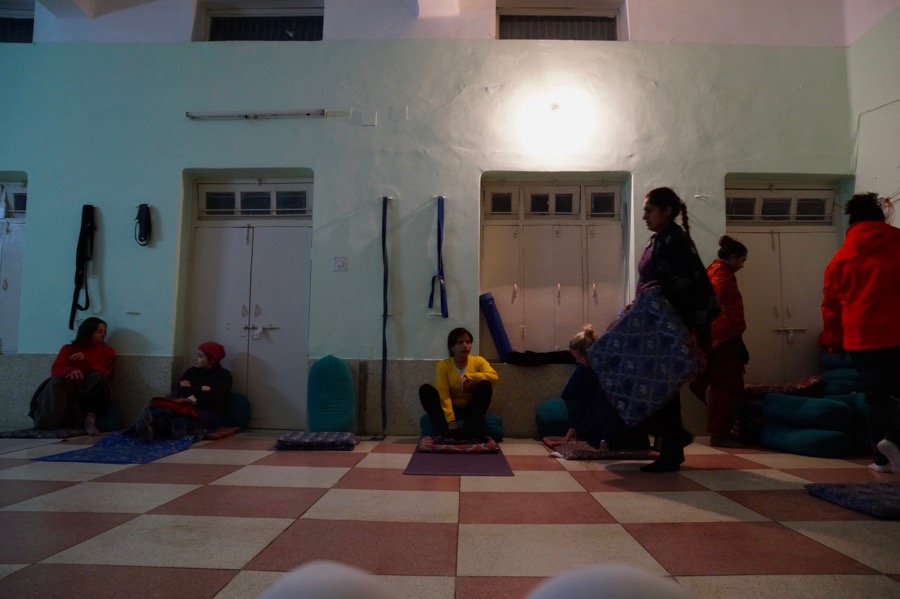
Yoga Teacher Factories
There is not, nor ever has been, a set definition of Yoga. Yoga is a science and a set of methods that cleanse and purify the body and mind, as well as cultivate, preserve, and direct prana (life force energy). Ultimately, yoga aims to awaken individual ego identity and unite with all-pervading consciousness.
Since Swami Vivekananda brought yoga to the USA in 1893, Western-influenced yoga had fractioned and set off in a multitude of directions. The physical postures (asana), are the third of the 8 practices of Raj Yoga and were meant to prepare the body to sit comfortably in meditation. In the West, the words ‘Yoga’ and ‘Asana’ have become synonymous and largely reduced to no more than a fitness regime.
With growing popularity, Western-yoga has become a multi-billion dollar business in which people are drawn to yoga as a career rather than a sincere yearning for spiritual development. That is a huge 180 degrees!
In general, I see yoga’s popularity as a positive sign for the planet. Even though the West has a misconception of what yoga actually is, the practice builds strength, balance, flexibility, and focus, whether you sit in meditation or not. Those who practice regularly may also notice increased self-awareness, patience, compassion, and in time may become curious about the fullness of yoga.
I am saddened, however, that yoga has turned into a business. The school I attended in Rishikesh pulled in well over 1 million USD yearly. That’s a lot of money in India! It didn’t appear that any of that money was invested in materials, facilities, or taking care of the students. They asked for payment in cash upfront, which they received without question. Shady business practices are the reason Prime Minister Narendra Modi made a radical surprise attack on “black currency,” creating a countrywide cash crisis in the process.
After making a huge journey to India and paying the tuition, students accept whatever poor quality training they’re given, for fear of having their certificate withheld should they complain. So you’re buying a certificate rather than a Teacher Training. Writing a bad review implies you weren’t trained well, so many keep their mouth shut.
At the end of my program, the founding ‘Swami’ gave us a lecture likening his school to God and informed us that speaking poorly of his school is like speaking poorly of our parents, making us bastards (Yup, he said that). A year later that same swami was arrested for sexually assaulting one of his yoga students. It takes more than an orange robe to make a swami.
India is full of yoga teacher trainings, with over 200 in Rishikesh alone. Many are exceptionally good. I just did a horrible job of choosing one. So if I haven’t scared you off yet, here are some things to consider:
Are You Ready to Teach?
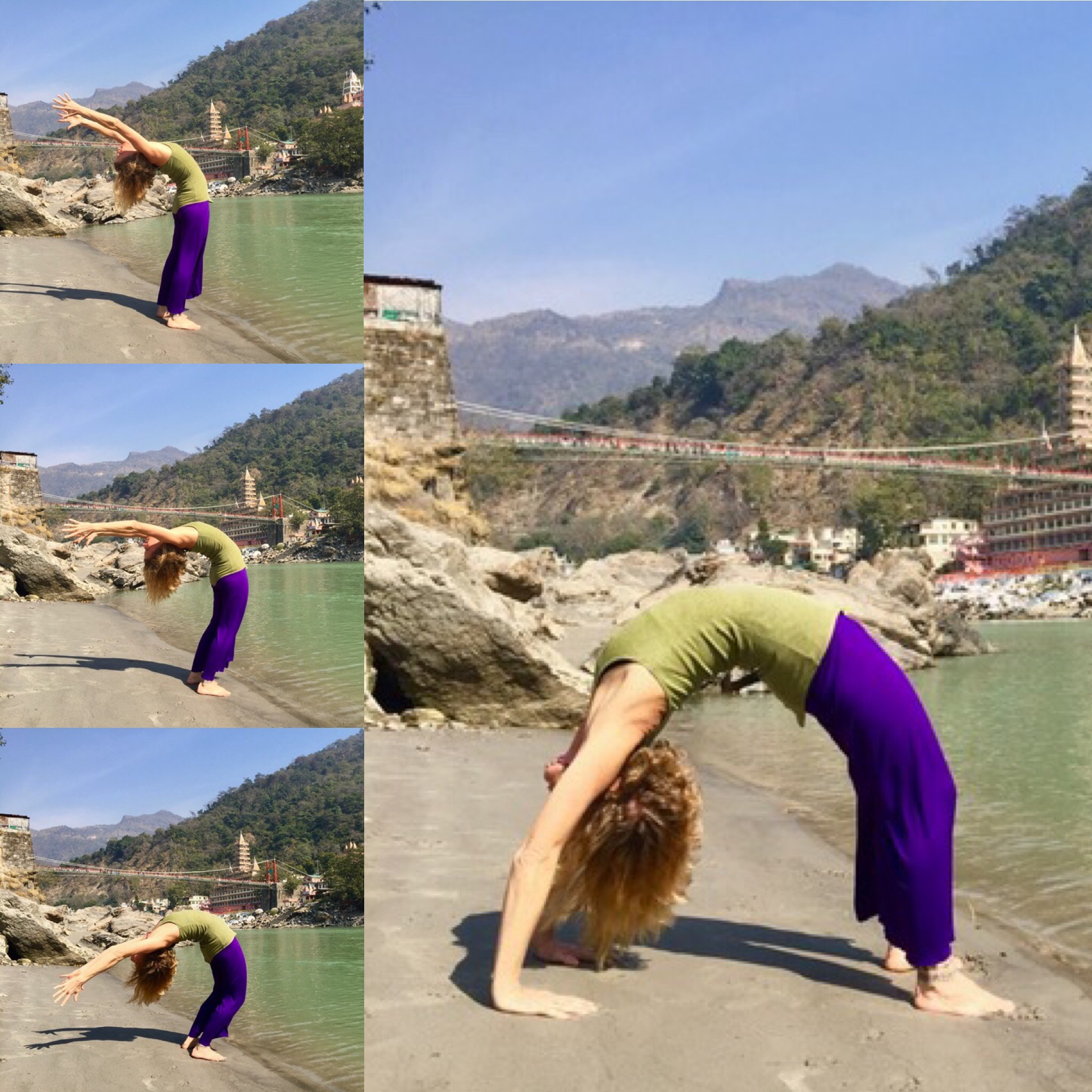
Some people take yoga teacher training in order to enhance their practice and learn more about yoga philosophy. Others have the aim to teach. It takes time to understand the subtleties of the practice (more than a 200 or 500-hour teacher training). I studied with advanced instructors for 5 years before taking my first Yoga Teacher Training in 1999.
Yoga Teacher Trainings in India claim to have attendance requirements, yet most don’t uphold those requirements. They accept anyone who pays the tuition. This is a problem for advanced students because you are held back to a beginner’s pace.
Quite a few students in my India teacher training were completely new to yoga and spiritual practice in general.
While it’s true that teaching forces you to learn quickly, a certificate does not make you a good teacher, experience does.
The very first teaching in the 8 limbs of yoga is Ahimsa, meaning non-violence. Practicing asana incorrectly can cause injury. It’s so important to know what you’re doing with other people’s health in your hands.
Choosing the Right Training
Style
The style of yoga you’re interested in can direct your location choice. For example, If you’re interested in Ashtanga Vinyasa, then Mysore would be a logical place to investigate. Iyengar Yoga? Go to Pune. Interested in incorporating Ayurveda? Kerala is known for that. Yoga therapy? Try Chennai.
If you’re a beginner, then you may not know which style you prefer yet. In which case, many schools offer a “Hatha and Ashtanga Vinyasa” program which is a fine start for a beginner.
Level
If you’re relatively new to yoga, the large teacher training businesses will probably feel fine for you. These businesses provide an overview of yogic theory and practice without being intimidating for a ‘new-bee.’ You don’t always know who you’ll be studying with, as they usually have a revolving door of teachers. Sometimes, there will be qualified instructors, other times not. But the mass schools are quite affordable.
For advanced or long-term practitioners, these same schools will be frustrating because classes are overly full and instruction is not at a level you’re ready for. Experienced yogis should research a quality teacher in their preferred style and avoid Teacher Training businesses that pump-out 100 or more certificates a month. High-level trainings can be found in India. They are more expensive, but worth it because your time is maximized.
Climate & Environment
Want to be nurtured by the warmth of the tropics? Look into the South Indian States of Kerala or Goa. The best time to visit South India is November through April. May to August can be squelching hot and shops/restaurants closed as people head north. Late June through October experience monsoons in South India.
Do you love mountains? Rishikesh and Dharamsala both have a myriad of options for yoga teacher training. Spring and Fall are the best times to be in the mountains. I don’t recommend high altitudes from late November to early February unless you enjoy practicing in a parka. Dharamsala can be quite cold all the way through April. Buildings lack proper heating and insulation, and the frigid wind blows through cracks in the walls and windows panes.
You May Not Need To Prebook
It may be advantageous to arrive early and have a look around before paying a deposit. Ask the local community about the reputation of different schools. Talk to recent students and graduates. Go to drop-in classes, and meet the teachers. Check the facilities, equipment, meals, sanitation, and accommodation. If it doesn’t match the claims on the website, this should tip you off as to how they’re running a business.
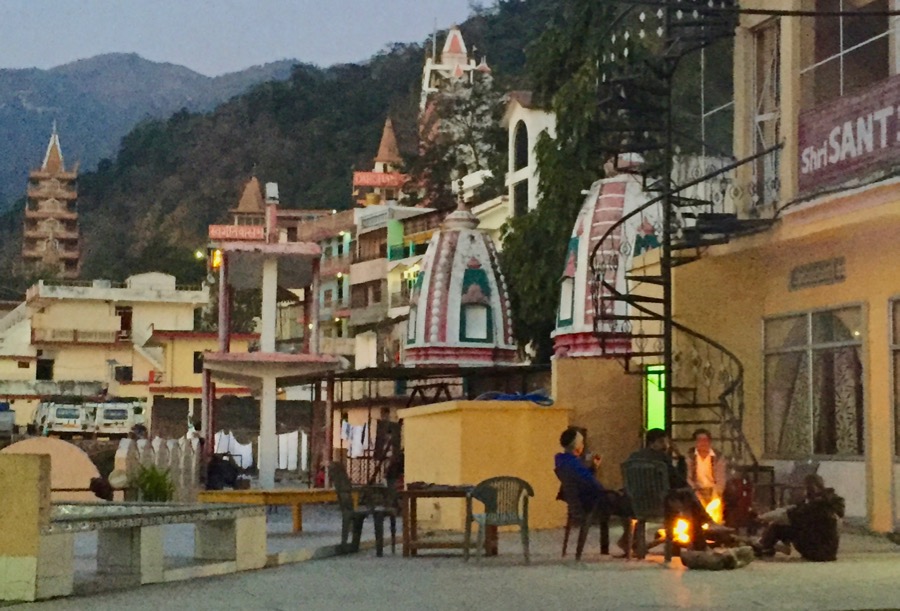
What to Expect
Sanitation
From what I hear, the first thing Indians notice upon arrival in North America is how clean everything is. Conversely, for North Americans India is, well …not. Your sanitation standards will need to lower.
Accommodation
To feel comfortable staying in a room long-term, I had to disinfect it myself. I’d buy rubber gloves, an anti-microbial cleanser, a few sponges, and spend a couple of hours cleaning every single room I rented in India. I’m pretty sure it’s the only deep clean those rooms ever saw. Additionally, every single room had a problem. Be it plumbing, noise, mold, cracks in the wall, lack of insulation, shotty wifi …you just have to surrender. It’s India.
Getting Sick
Germs spread easily in this environment. Every single person in my training became ill at some point from flu or dysentery or both simultaneously. Some even went to the hospital. Getting sick in India is no fun but it seems to be part of the package.
Some schools lodge you in nearby hotels off-site, so ask your school how to contact them for help in case of severe illness in the middle of the night. If your school doesn’t have an arrangement for emergencies, it’s not a good sign.
Food
YTT’s in India usually supply meals and accommodation. I was fine with the food. It was simple but healthy. Breakfast was always porridge with fruit. Lunch and dinner consisted of simple curries with rice and a few raw vegetables. Some people claim they were sick from those raw vegetables. I was not. My school had purified water available to refill your water bottle.
Schedule
Prepare yourself to be very busy from 5:30 am until 8:30 pm, five to six days per week.
Free Time
The program I attended was conducted six days a week with Sundays off. Instructors often ran classes over-time, so what little time we did have was used doing laundry, bathing, or keeping up with reading assignments and homework.
Other schools provided more free time. They were able to do this by having a longer program. I suspect my school had an agenda to get us through the program as quickly as possible so they could welcome the next group and make more money.
Excursions
Many schools generously offer weekend excursions to surrounding areas. Other schools offer none, or only one excursion (which turns into a promotional photoshoot for their website). But you can create an excursion of your own by getting a group of friends together and renting a taxi.
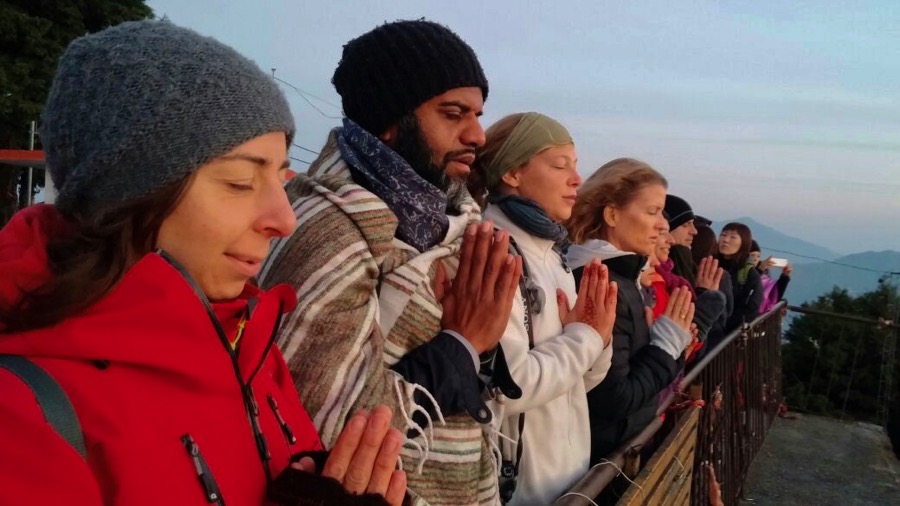
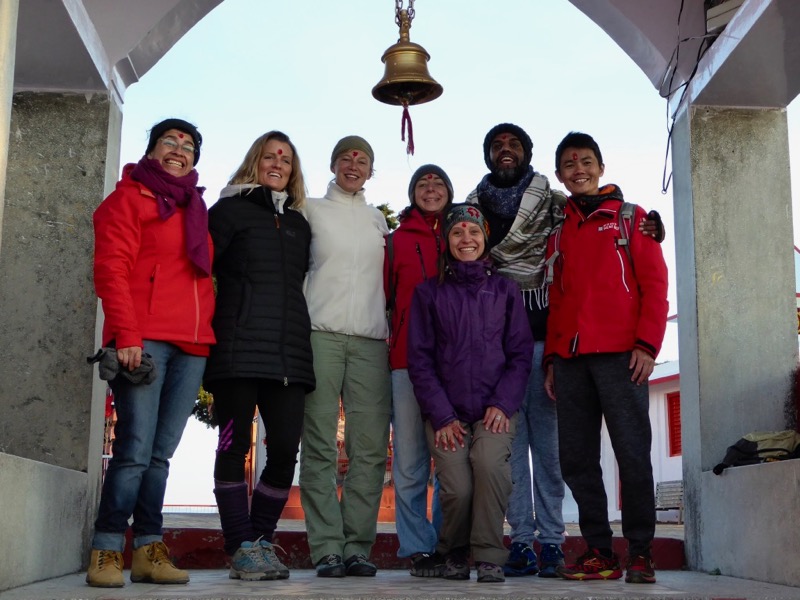
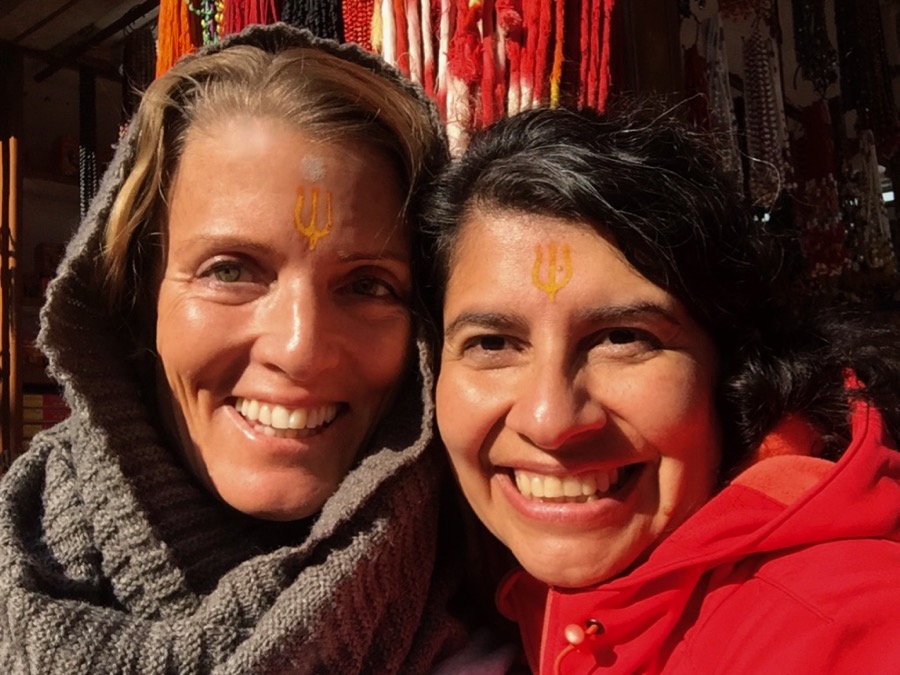
Packing for India
Pharmaceuticals & Prescriptions
Ayurveda is one of the world’s oldest holistic healing systems developed more than 3,000 years ago in India. Finding an ayurvedic herbal pharmacy is as easy as walking a block or two in any direction. The clerks are often highly educated Ayurveda practitioners and able to recommend the best remedy for your needs.
Finding a stocked allopathic pharmacy will be trickier outside of big cities. Best to bring a good supply of your own prescription medications. If you wear glasses, keep a copy of your prescription in case you lose or damage your glasses.
Stainless Steel Water Bottle
Most ashrams, hotels, and yoga centers have a water filter refilling station. I like metal bottles because they’re sturdy and bacteria can’t survive on metal surfaces. Some people don’t trust the water filters, but I was never sick from one. I’m not comfortable buying bottled water and contributing to a worldwide crisis of plastic waste.
I like this Iron Flask Sports Water Bottle because it’s large, insulated (keeps things hot or cold), and it has a wide mouth so it’s easy to clean.
I did carry a water filter with me that I used when there was no access to a purified water refill station. I LOVE the GRAYL ultra-lite water purifier, and I brought a couple of replacement cartridges, but I didn’t need them.
Tea Tree Oil, Oregano Oil, and Olive Leaf Extract
Essential oils are plentiful in India, but these three were hard to find. organic tea tree oil treats cuts, rashes, infections, and acne. I used high-quality oregano oil internally for sore throats, flu, and dysentery. Olive leaf extract is a powerful natural antibiotic and a crucial element in any travel first aid kit.
*As an Amazon Associate, I earn from qualified purchases, but I never recommend an item that I don’t use and love.
What to Buy in India

Water Heating Coil
For making tea or oatmeal in your room, or to boil water for purification purposes, you can buy an electric heating coil and metal cup for just a few dollars.
Yoga Mat
Schools do provide yoga mats, but they don’t appear to clean them. You’ll want your own. Mats are cheap in India, so if you don’t want to pack one, then buy a mat in India and donate it before leaving.
Herbal Remedies & Toiletries
Ayurvedic pharmacies are fully stocked with remedies for anything from colds, flu, digestion, and sleep to natural soaps, shampoos, and facial products.
Clothes
Clothes in India are cheap and perfect for the climate and culture. The only exception is sport sandals, hiking shoes, tank tops, and lycra yoga pants. In India, women don’t expose their hips as we do in the west. They wear baggy pants with a tunic hanging over the hip area, or some form of a sari. Walking the streets in your tight yoga pants appears shockingly risqué here. Bare shoulders are also considered private and sensual. You’ll invite unwanted attention walking around in a tank top. For a traditional Indian woman, this is likened to walking down the street in a bra. You can still wear your yoga pants and a tank top, but throw a cotton gauze tunic over it all. It’s light and comfortable, even for asana practice.
Was it Still Worth it?
Emphatically Yes! Though difficult and at times frustrating, the experience was still deeply rewarding. Anyone serious about yoga has to make their India pilgrimage at some point.
Even amidst the lack of sanitation, India has a purifying effect. It beats self-importance out of you, forcing you into submission and acceptance, and it’s the perfect place to master your positive thinking skills.

Have you taken yoga teacher training in India? Share your experience in the comments below.

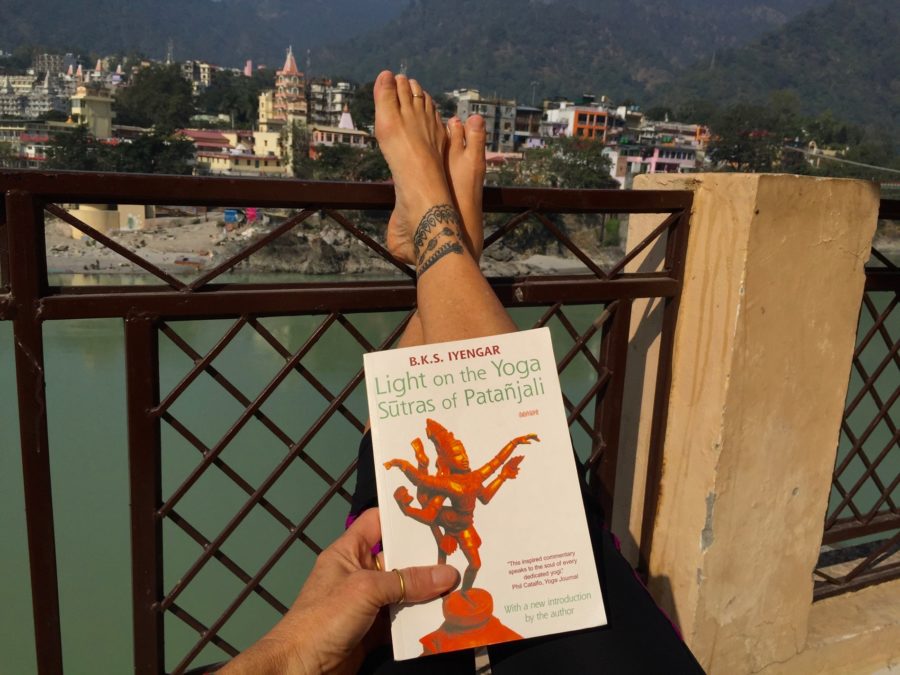
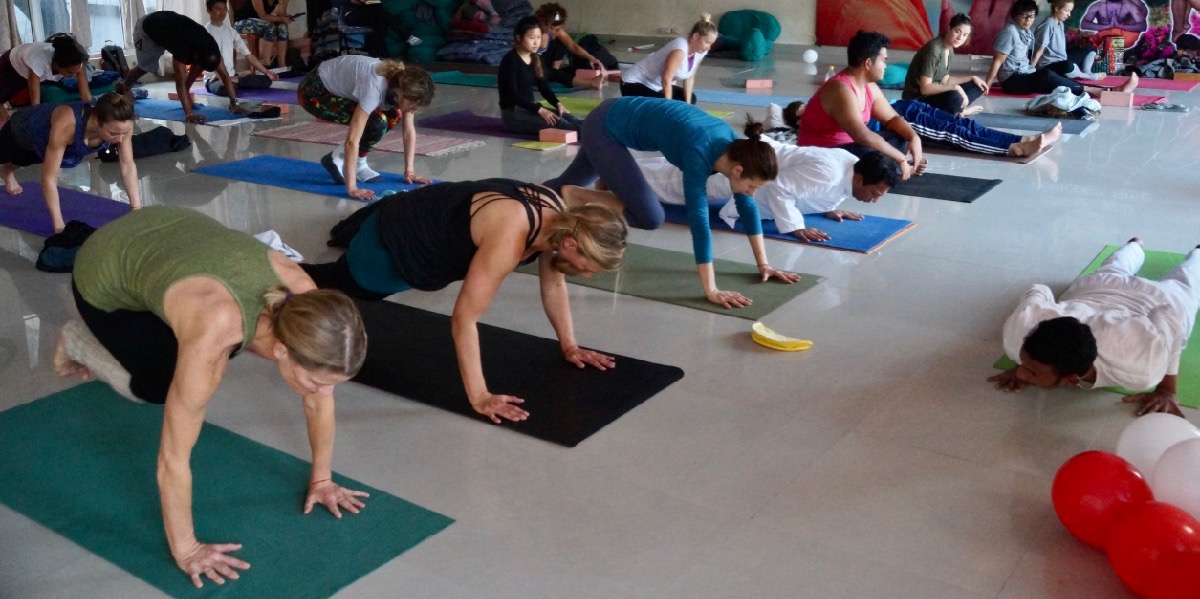

8 thoughts on “How to Choose a Yoga Teacher Training in India”
Thanks for the info, very insightful.
Thanks for reading Belinda!
I really enjoy your writing alot. Such a journey!. I didn’t know you were looking for a yoga certification school. i would have recommended Krishnamacharya Manderin in Chennai.
I was there for 6 mos in 76-77. I studied directly with TKV Desikachar…but the other teachers are stellar. They have alot of integrity and wisdom. Asana’s and also studying other things as well. I liked that form of Yoga because they modify it to the person and their body. Very different than Iyengar Yoga even though my teacher’s (TKV Desikachar) father, Krishnamacharya, taught Iyengar.
I look forward to more of your writings.
xoxoxo
Marilyn
Hi Marilyn, Yes. I’ve learned a lot from TKV Desikachar’s books. Unfortunately, since his son Kausthub was involved in a sex scandal, the foundation has been in turmoil. Unfortunately, it wasn’t your typical “yoga guru secretly having sex with students” scandal. It was physical sexual abuse which has led to serious criminal allegations and subsequent investigations by the police. So with that going on, and the fact that I hate cities, and definitely don’t want to be in and India city… I would not have studied in Chennai. You were very lucky to be there with such a master back in those days. Much Love to you.
That was Krishnamarcharya YOGA Manderin…in Madras…when I lived there. Near Adyar..where the Theosophical Society is.
Thank you so much for writing this beautiful article! Do you have any recommendations for reputable schools? There are an overwhelming amount!
Hi Leah. Rishikul Yoga Shala in Ram Jhula has integrity and a sister school in Kerala if you prefer the tropics. If you’re willing to pay more money and have an interest in Ashtanga Yoga, then Tattvaa Yoga Shala in Ram Jhula has a respected reputation. I also studied at the Himalayan Iyengar Yoga Center in Dharamkot (near Dharamsala) and the quality was excellent, but for the love of God – don’t go in winter because it’s too cold. They also have a center in Arambol, Goa (warm beach climate) during the winter months. Other options are the big names related to BKS Iyengar in Pune. Pattabhi Jois in Mysore, or Desikachar in Chennai. In general, for advanced yogi’s I recommend finding a teacher rather than a school. Good luck!!!
Thank you so much!!!